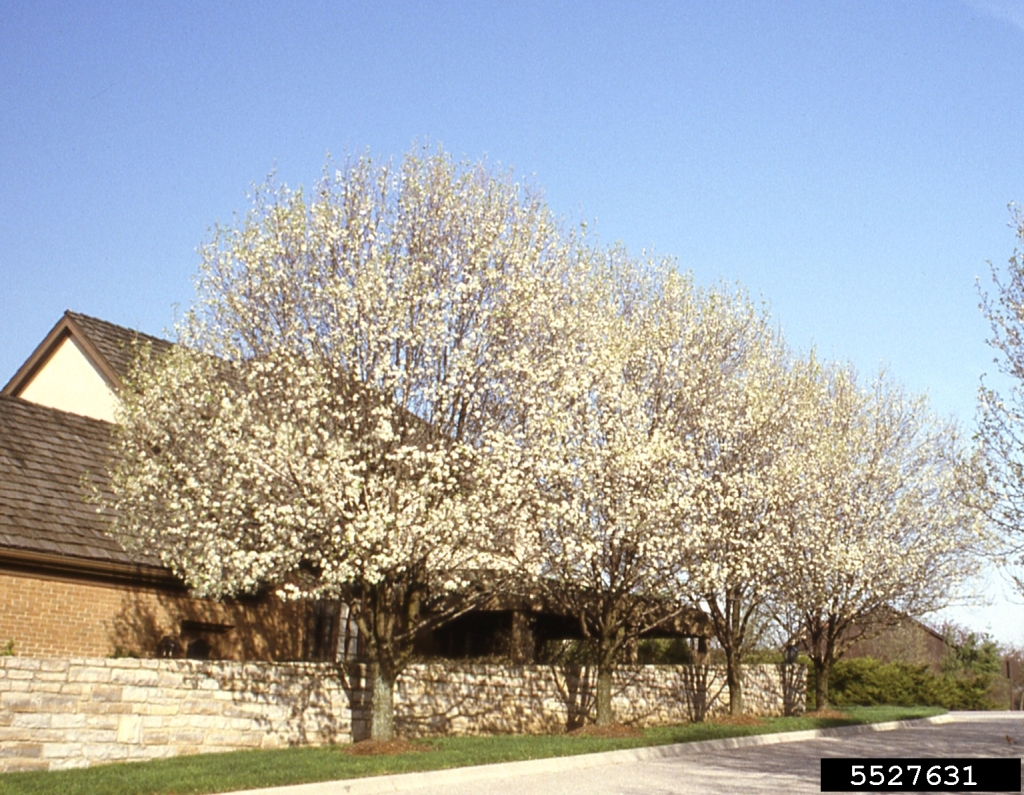
When landscapers began planting Bradford pears in the mid 1960s in suburban subdivisions, mall parking lots and streetscapes they told us not to worry. This flowering cultivar of the Callery pear (Pyrus calleryana) was bred to be thorn-less and sterile. We thought it could not reproduce.
The trees were planted everywhere.
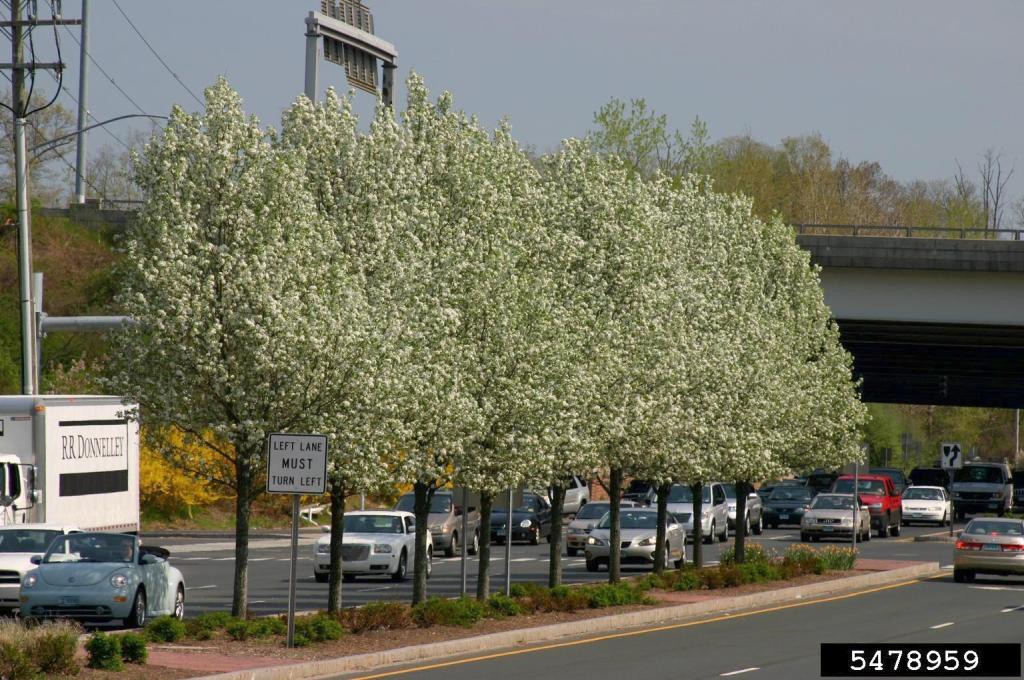

We soon found out that the flowers stink, but it took a few years to discover the trees are brittle. The Bradford cultivar breaks in storms.
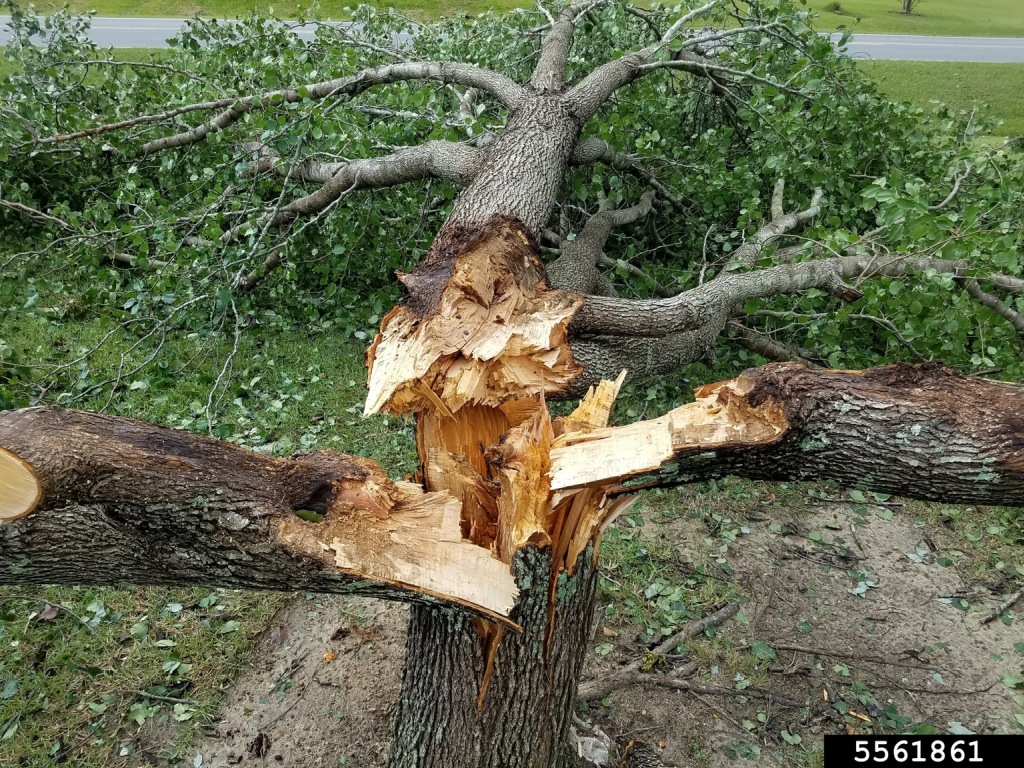
So horticulturists went back to the lab to create stronger cultivars including ‘Aristocrat’, ‘Autumn Blaze’, ‘Capital’, ‘Chanticleer’ (also known as ‘Cleveland Select’), ‘New Bradford’, ‘Redspire’, and ‘Whitehouse. The tree was poised to become invasive.
It took a while to realize that different sterile cultivars within the reach of the same pollinating insect could cross pollinate and produce fertile fruit. The seed is a hybrid of hybrids. Birds eat the fruit and transport the seeds.
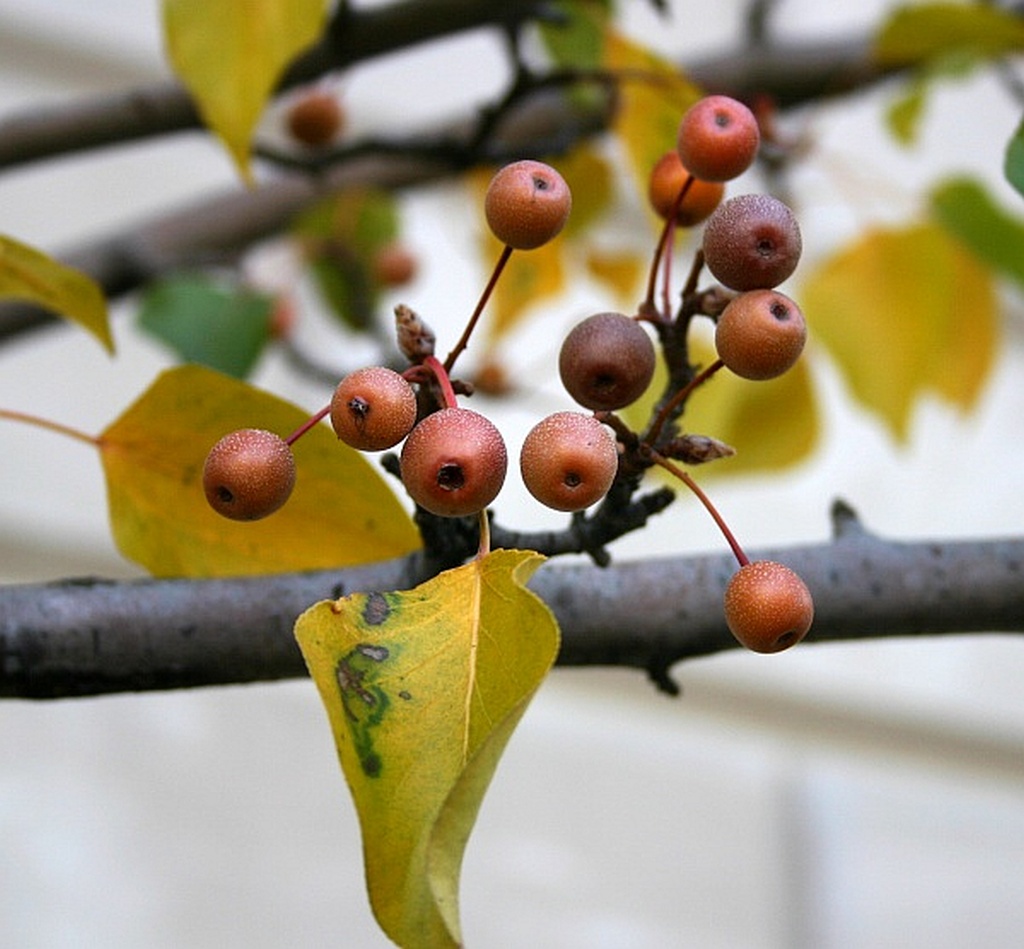
Pyrus calleryana spreads prolifically now by seeds and roots in old fields, roadsides and disturbed soil. The invasive trees are not noticeable until early spring when they bloom before our native white-flowering trees: chokecherry, downy serviceberry (shadbush), and hawthorn.
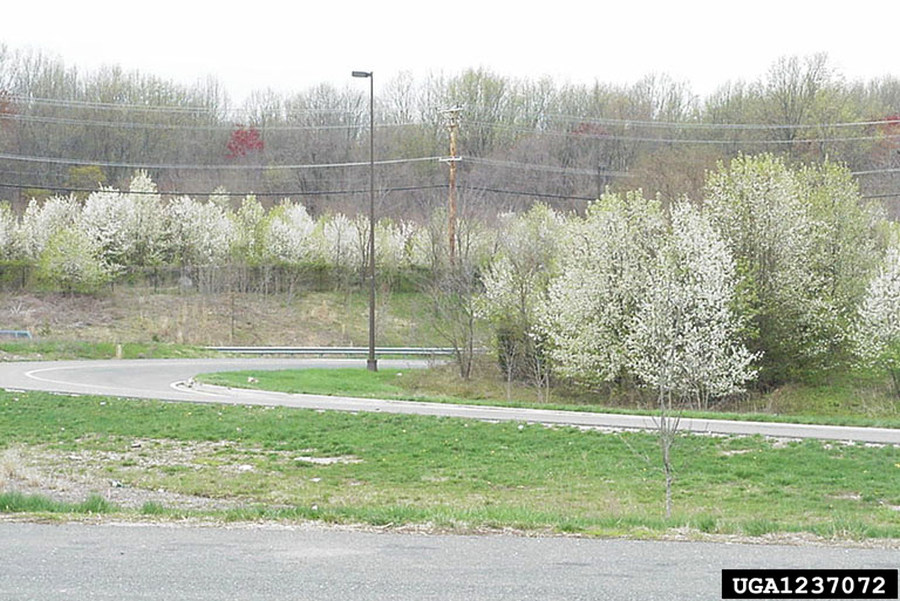
It’s gone wild in 25 states and is listed as invasive in 14. In July 2021 South Carolina banned Pyrus calleryana sale and cultivation with enforcement phased in by October 2024.
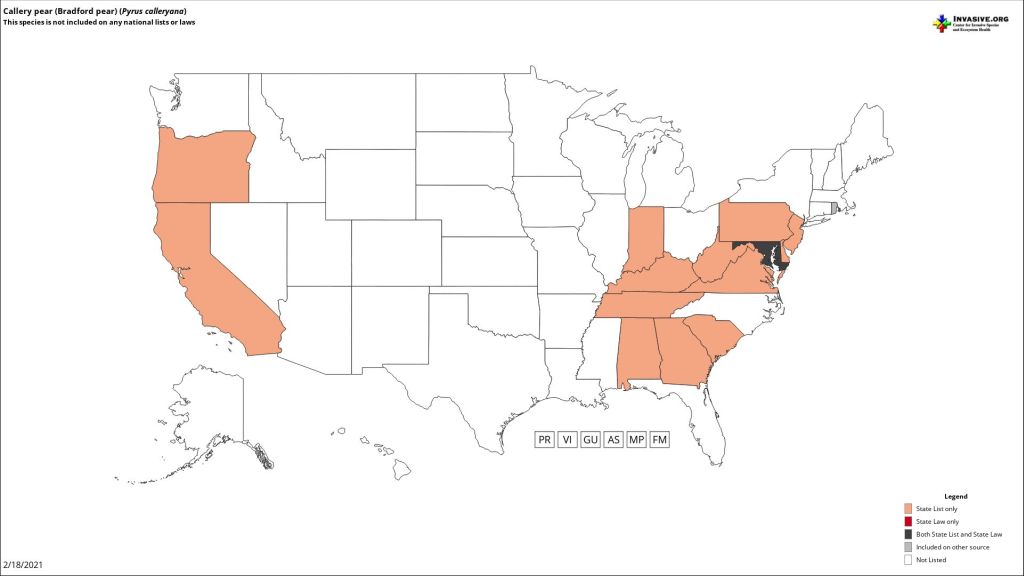
In November 2021 the PA Department of Agriculture added Callery pear (Pyrus calleryana) to the state’s list of Noxious Weeds. It cannot be legally sold or cultivated in our state though you may see it in nurseries while enforcement is phased in through February 2024.
In the meantime, if you are offered a Callery pear cultivar as a landscaping choice, don’t buy it.
(fruit photo by Kate St. John, remaining photos and map from bugwood; click on the captions to see the originals)
p.s. Did you know that some of hybrid wild trees revert to their thorny ancestry? Don’t be confused if you see thorns in the wild.
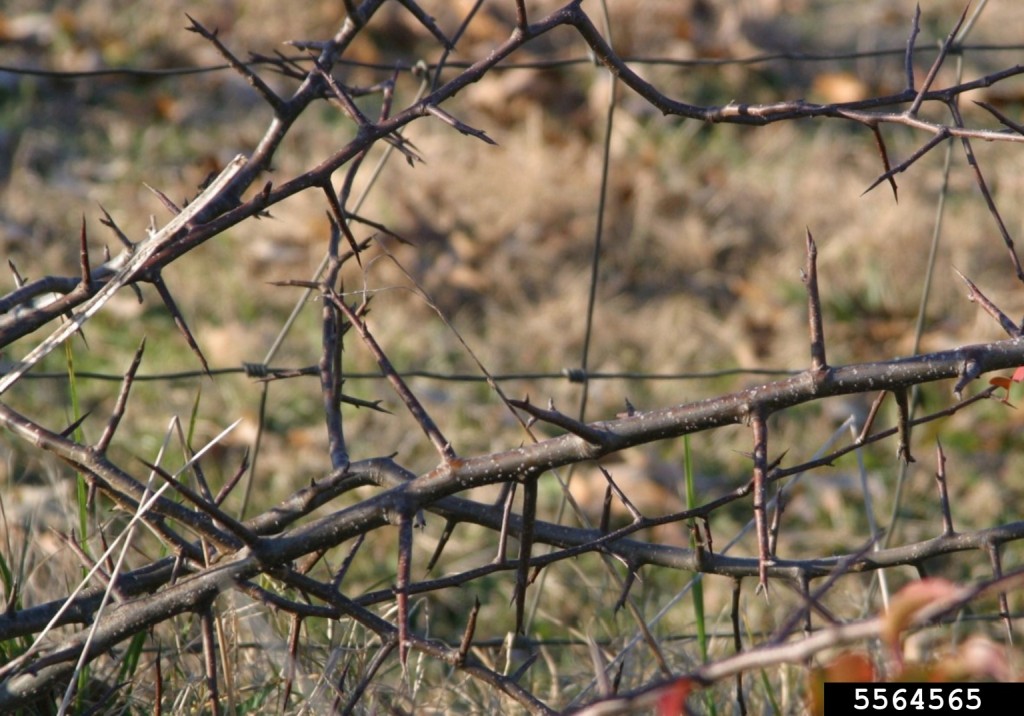
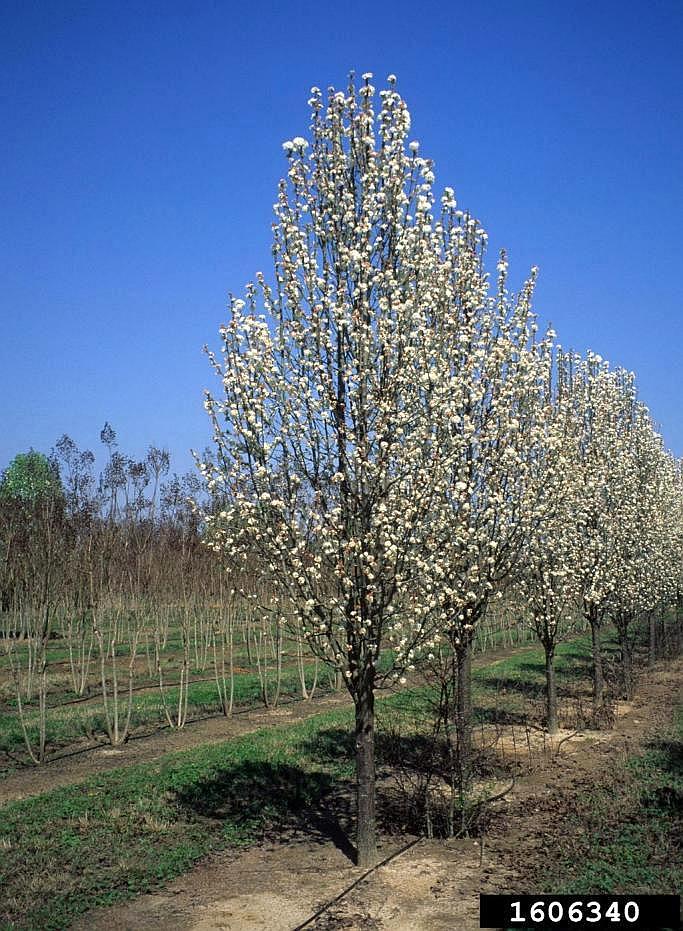
If I were governor of any state the first thing I’d do is create an eradication program. Private owners could volunteer state task force to come eliminate them. Public ones would be mercilessly torched and groves replaced with natural plantings. Once all the public ones are down I’d create a satellite surveillance program to take pictures in spring to locate trees. In five years, if a new tree blossoms and your still existing pear is the nearest, you get a fine unless we can take yours out, too.
My wife knows this hatred burns within me. I’m from MD.
So we’re going to wait an additional three years to allow it to mature and spread even further before we make an attempt to eradicate it?
I believe the 3 year wait is on enforcement against nurseries. PA Dept of Ag info has the timeline pasted below.
Read entire doc here: https://www.agriculture.pa.gov/Plants_Land_Water/PlantIndustry/NIPPP/Pages/Callery-Pear.aspx
*Winter 2021 – Callery pear is added to the Controlled plant and Noxious Weed list as a Class B weed.
*February 2023 – Letter of warning would be issued to any plant merchant selling Callery pear, providing a date in February 2024 after which any remaining inventory would be subject to a destruction order.
*February 2024 – Stop Sale/Destruction orders issued to plant merchants selling or distributing Callery pear.
Haven’t we learned over the last couple years that we need to act fast. This seems to be a “plant-demic” and the only people who would want to keep these trees are selfish. They do nothing for any living thing, but were brought here for the pleasure of humans. If you love nature you have to hate these trees!